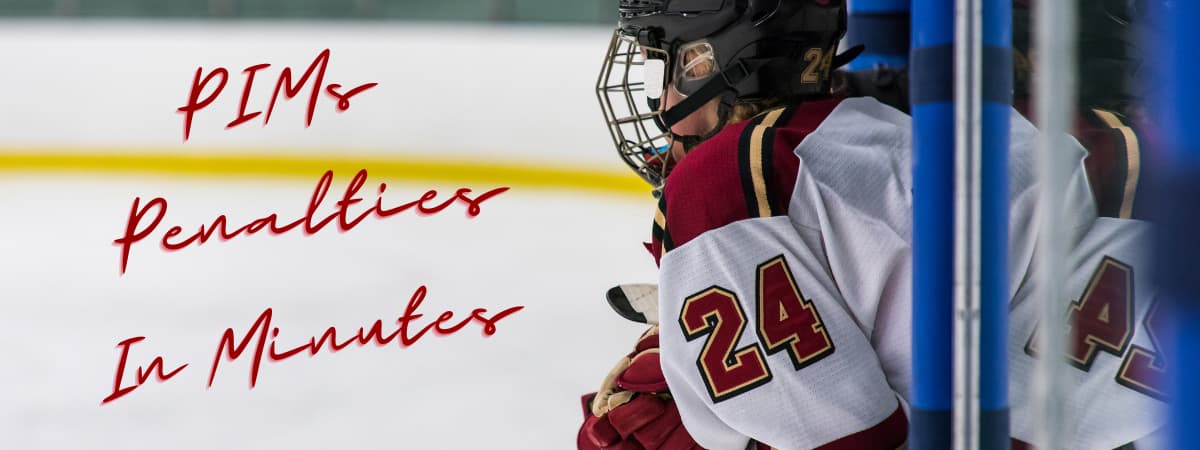What does PIM mean in Hockey – Best Guide to Penalty Stats
Today we’re diving into what does PIM mean in Hockey! I’m talking about Penalties in Minutes, PIMs are the “time-outs” in the hockey universe.
Penalty Infraction Minutes (PIMs) serve as a quantitative measure of a player’s infractions throughout a game, tallying up the time they spend in the penalty box. Understanding PIMs not only provides insight into a player’s discipline but also influences team strategy, as excessive penalties can lead to critical power play opportunities for the opposing team.

In ice hockey, Penalty Infraction Minutes (PIMs) are calculated by totaling the number of minutes a player is required to serve in the penalty box for various infractions during a game.
If you are just wondering how and what type of penalties consist of PIMs, this one’s for you!
Table of Contents
Picture this: It’s the last period of a nail-biter Bantam hockey game. The energy is electric and superstar hockey player, Timmy, is skating like he’s auditioning for “Frozen on Ice.” Then, in a burst of overzealous enthusiasm, Timmy body-checks an opponent into next Tuesday.
BOOM! …The atmosphere is charged with awe as Timmy, our little Wayne Gretzky-in-training, takes the walk—or should I say, the skate of shame—to the penalty box. As the door shuts behind him, he’s suddenly in a glass cage of emotion, contemplating life choices and watching his teammates go to battle without him.
Now, let’s talk turkey about what this means for Timmy’s hockey stats. These PIMs aren’t just doodles on a scoresheet; they’re the amount of time your player spends reflecting on their “sins” while the game rages on.
And that’s how Timmy adds to the column where “PIM” stands, right next to goals and assists. Stay tuned as we delve deeper into how these PIMs can be both a curse and a lesson in our little players’ hockey careers!
What follows after his minor penalty is called, two minutes determined to be the penalty to be served is now the Power Play.
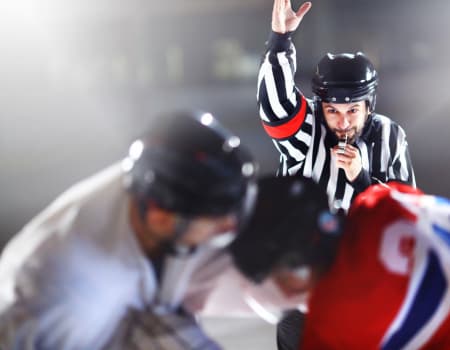
What are PIMs and how are they calculated?
In the realm of ice hockey, PIM calculation and PIM stats, serve as a pivotal metric for statistical purposes, that quantifies the total time an individual player has been penalized. These minutes are meticulously aggregated, accounting for the total number of minutes a player spends in the penalty box across a season or career.
Teams and analysts track penalties not just to assess discipline but also to gauge a player’s impact on the number of games, particularly when it comes to crucial moments that could sway the outcome.
Therefore, a nuanced understanding of PIM stats is essential for anyone deeply involved in ice hockey, as it provides valuable insights into the behavioral patterns and strategic implications associated with individual players.
The Cost of Infractions: Understanding Penalties and Their Impact on the Game
In the intricate dance of ice hockey, penalties often serve as pivotal turning points that can lead to either power plays or penalty shots. When a player receives a two-minute penalty, for instance, the opposing team gains a numerical advantage on the ice, often leading to power plays that can result in game-winning goals. Interestingly, this numerical imbalance also offers the penalized team an opportunity for short-handed goals—a counterintuitive but good thing in what is otherwise a disadvantageous situation. Thus, understanding the implications of penalties, both for power plays and potential penalty shots, is crucial for anyone keen to grasp the complexities of this fast-paced sport.
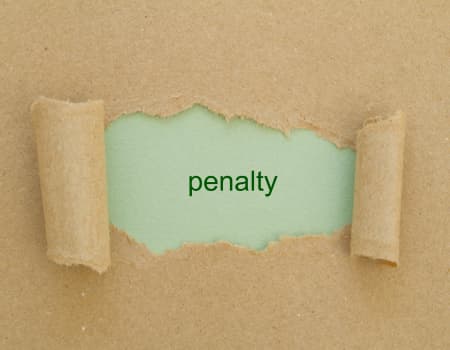
Power Play
A Power Play is great news for the other team, as your team now plays with one less player on the ice. This is more significant than it appears. It’s like giving the non-penalized team a mini advantage—a one-up, a golden opportunity, a lot more ice, and the ability to score a goal! This numeric advantage lasts for the amount of time the offending player is in the penalty box.
Penalty Shot
A Penalty Shot is a whirlwind of emotion.
When a player is on a breakaway and loses a clear opportunity to score due to an infraction of interference (i.e. hooking, tripping, slashing) from an opponent, a penalty shot is granted. In this context, a breakaway signifies that no other players stand between the shooter and the opposing team’s goalie.

For the shooter, it’s a chance to redeem themselves and score a crucial goal.
For the goalie, it’s an opportunity to become a brick wall and a team hero. And for US Hockey parents, well, let’s just say we feel every deke, juke, and shot right along with them. It’s one of those make-or-break moments that captures the drama and thrill of the sport we all love so much.
So the next time you see a player break away, and you hear the sharp blast of a whistle, brace yourself for the exhilarating theater that is a penalty shot. It’s a heart-stopping slice of hockey heaven or hell, depending on which side you’re on! ??
Types of Penalties
I get it, watching your kid end up in the penalty box can be confusing and frustrating. So let’s clarify what those penalties really mean, like what contributes to PIMs. Understanding these rules will help you be more informed while watching the game.

Minor Penalties
Starting with Minor Penalties usually results in a two-minute time-out for your player for things like tripping. Examples of Minor Penalties are: Tripping, hooking, slashing, roughing, and holding. Double Minor Penalties are a bit more serious; they’re for incidents that might cause injury and will keep your kid off the ice for four minutes.
Major Penalties
Now, Major Penalties (such as physical altercations), come with an absence or removal from the game. Then you have Game Misconduct and Match Penalties, which are severe enough to remove a player for the rest of the game and do not usually end with Power Plays, but will be assessed PIMs and possibly other consequences, such as suspensions and fines at times.
But remember, penalties don’t just affect the player in the box. They also give the other team a chance at a Penalty Kill, which is when they try to prevent the opposing team from scoring during a power play. So, penalties can influence not just who is on the ice, but also the overall flow and outcome of the game.
For example, when a player is penalized and sits out, it gives the other team a chance to score what’s known as shorthanded goals. On the flip side, the team with the extra player also has an opportunity for what could be a game-winning goal.
Alright, let’s break it down on a table, shall we?
| Type of Penalty | PIMs | Power Play? |
|---|---|---|
| Minor Penalty | 2 mins | Yes |
| Double Minor Penalty | 4 mins | Yes |
| Major Penalty | 5 mins | Yes |
| Game Misconduct Penalty | 10 mins | No |
| Match Penalty | 5+ mins | No |
Okay, let’s get back to it. Penalties do more than just send a player to the box; they change the entire game’s strategy, affecting everything from the number of goals scored to the number of shots taken.
Penalties can be confusing, too. Beyond the usual offenses that hockey players more serious penalties such as High Sticking can cause a delay of the game while referees consider the intent and consequence of the penalized player. There are more complicated ones like Unsportsmanlike Conduct and Game Misconduct penalties that can really throw everyone off.
When these happen, it’s not just the players and coaches scrambling to understand the impact—it’s also the parents. Being familiar with the types of penalties can save you from the frustration of not knowing what’s going on, and it can help you follow the game.
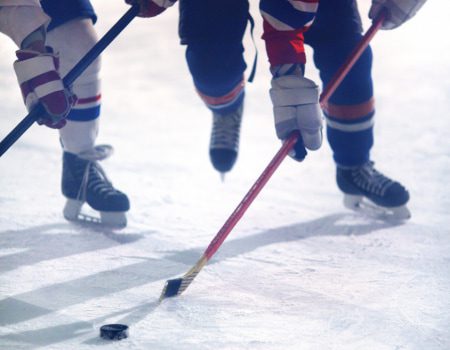
Who’s Spent the Most Time in the Sin Bin? A Look at NHL Players with Record-Breaking Penalty Minutes
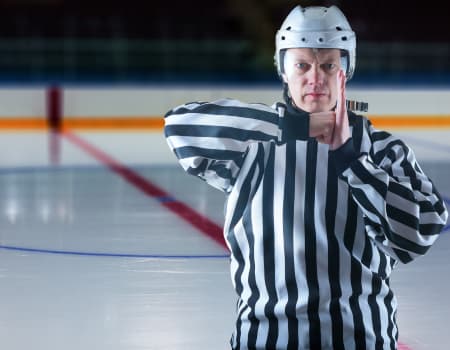
In the National Hockey League (NHL), Penalty Infraction Minutes (PIM) is more than just a statistic; they’re a window into a player’s style, discipline, and sometimes, notoriety. When you delve into hockey statistics, particularly the high PIM minutes, you find a host of players who have left an indelible mark on the game—sometimes quite literally. This compilation examines some of the NHL players who have amassed the most penalty minutes in league history, highlighting their contributions to the sport.
Let’s begin with Tiger Williams, the NHL record holder for the most PIM. Over the span of his career, Williams accrued a jaw-dropping 3,966 penalty minutes. To put this into context, that’s approximately 66 hours of game time spent in the penalty box. Williams was known for his aggressive style of play, which clearly reflected in his high number of penalty minutes.
Another player of note is Dale Hunter, who also spent a lot of penalty minutes in the box. With 3,565 PIM, Hunter’s style was assertive, to say the least. Often embroiled in on-ice incidents, Hunter’s penalties ranged from high sticking to fighting. He was a player you would rather have on your team than play against.
Scott Stevens, primarily known for his bruising hits, accumulated 2,785 PIM during his career. A three-time Stanley Cup winner, Stevens was a skilled defenseman, but he was also an intimidating physical presence. His style of play, although controversial, was integral to his team’s success over the years.
Trevor Wilson is another player who has amassed a considerable number of penalty minutes, standing at 1,934. His playing style was a mix of skill and aggression, which earned him both praise and penalties in equal measure. Like Stevens, Wilson could be relied upon for critical defensive plays, but he was no stranger to the penalty box.
We cannot discuss high PIM players without mentioning Bob Probert and Tie Domi, both of whom have made significant contributions to their teams while accumulating PIM. Probert registered 3,300 penalty minutes, and Domi was not far behind with 3,515. They were both known for their enforcer roles, and they often found themselves in the center of on-ice altercations.
Marty McSorley, with 3,381 PIM, was another player who often played on the edge. He gained a level of infamy for some of his actions, but his high PIM minutes also reveal a player who was willing to put everything on the line for his team.
Then there’s Ron Hextall, the Philadelphia Flyers’ goalie who not only protected the net but also wasn’t afraid to drop the gloves. Hextall stands out as the goalie with the most PIM in NHL history, a title that underlines his unique style and influence on the game.
My heart bleeds orange and black—yup, hailing from the City of Brotherly Love, the Philadelphia Flyers are my hometown heroes on ice! ??
In summary, accumulating a high number of penalty minutes is not necessarily a negative mark on a player’s record. For many, like those mentioned here, their PIM reflects a style of play that, while aggressive, often contributed positively to their teams. These players knew the limits and pushed them, sometimes crossing the line, but always with a level of skill and strategy that earned them a spot in NHL history. It’s essential to consider these statistics in context, appreciating both the pros and cons they bring to the table.

